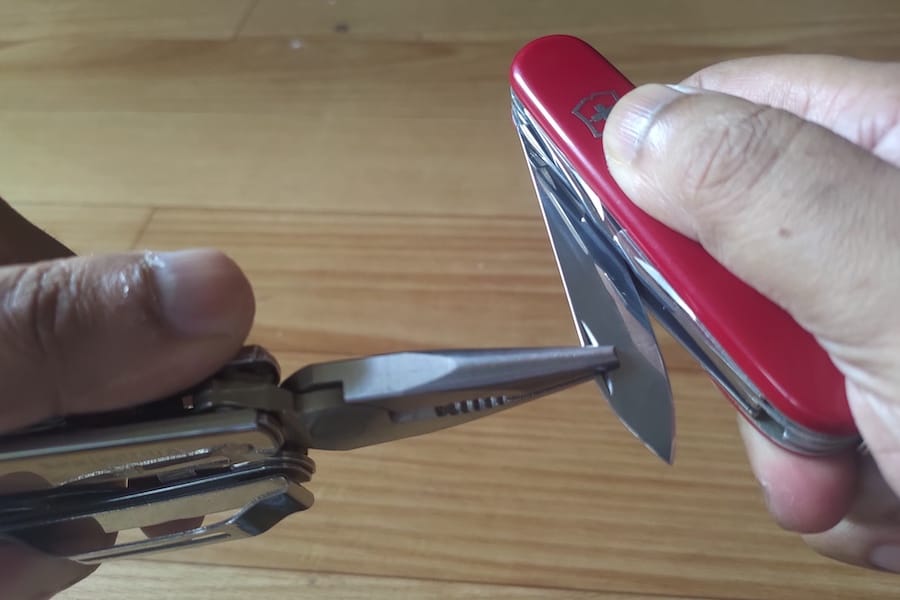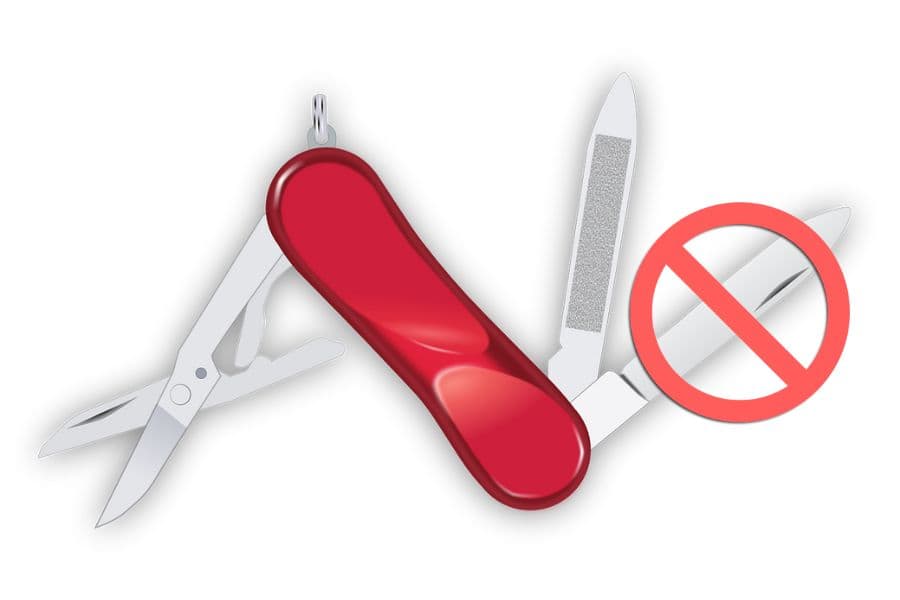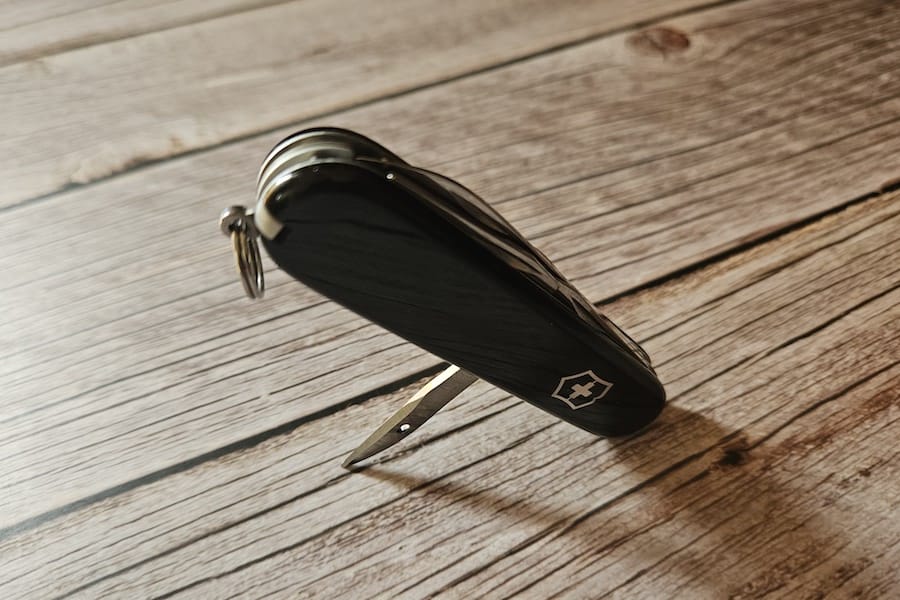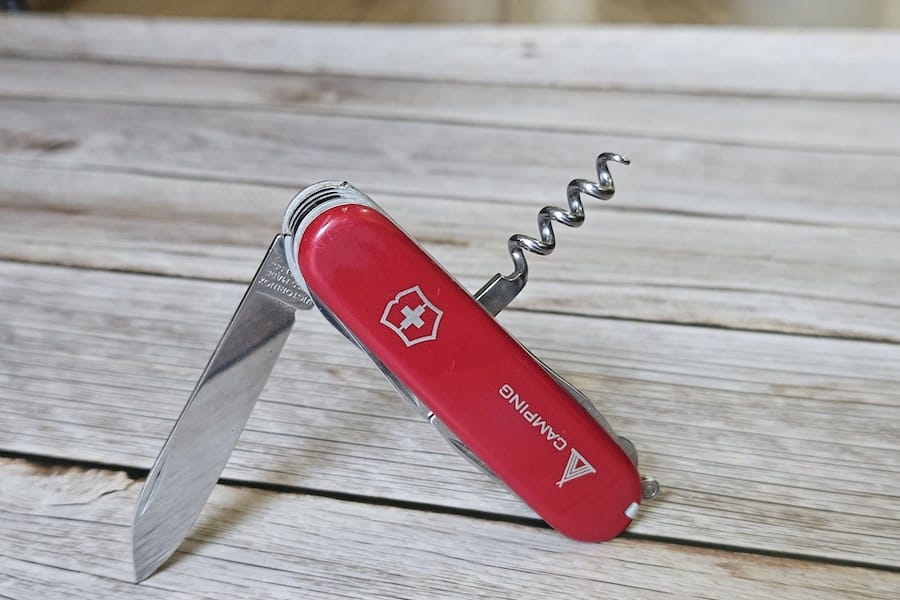When my friend complained about struggling to open his Swiss Army Knife, I knew what he meant. I have gone through this experience before. It wasn’t pleasant. And I believe many first-time SAK users must have faced this. So how does one of the best pocket knives in the world become so hard to open for some people?
The reason for a Swiss Army Knife to become too hard to open is either the slip-joint tolerances are too tight, or the SAK hasn’t been properly cleaned resulting in the accumulation of dirt and formation of rust in the joints. Too short or too weak fingernails is another reason for not being able to open a SAK.
Both the ‘issues’ lead to the same result. The SAK becomes almost useless. After all, what’s the use of a pocket knife if you can’t even open it?
Tight Tolerances of Slip-joint Springs in a Swiss Army Knife
This issue is not so common in Swiss Army Knives. Victorinox takes great care in the manufacturing process and their quality control is astonishing. SAKs would not have been so popular otherwise.
Strong slip-joints are a good thing actually. It prevents the blade from accidentally closing on your fingers.
But if you find the springs too strong, I would suggest using the SAK more.
Most new folding knives are a bit tight when they are new. They loosen up with use. A Swiss Army Knife is no exception.
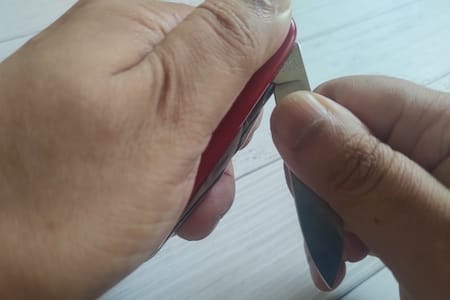
You can of course speed things up. Rather than waiting for months for the SAK to loosen up, just grab each of the tools and open/close them multiple times. Then lubricate the joints with oil.
The best quality multitool oil available in the market is the Victorinox Multi-Tool Oil (check here on Amazon).
It lubricates as well as protects the SAK from corrosion. Considering how little maintenance a SAK needs, one vial will probably last a decade.
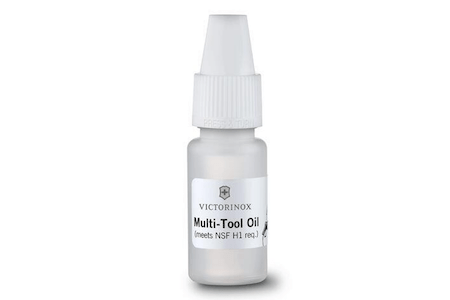
Some also use WD-40, or some other type of penetration oil.
Do this for a few days so that the interlocking parts work against each other to reduce the friction between the surfaces in and around the pivot/hinge.
Do not just use any oil for lubricating a SAK. In case you use your SAK for food preparation, you can use coconut oil which is edible, lubricates well, and also prevents rust.
Dirt and Rust Inside a Swiss Army Knife
This is a more genuine problem and is often the result of negligence on the part of the SAK owner. If you do not clean your SAK occasionally, it will accumulate dirt. A SAK also accumulates pocket lint if you regularly carry it in the pocket.
The food that you eat, the juice that you drink, everything finds its way inside the layers of the SAK and into the hinges and joints. Fruit juice, also some vegetable oils, can dry and harden, resulting in forming a layer of gunk and grime inside the Swiss Army Knife.
This also leads to corrosion. If the pivot rusts, it will further jam the slip joints making it almost impossible to open the tools.
If you abuse your Swiss Army Knife, i.e. do things with it that it is not designed for, it may become too stiff to open. For example, if you put too much pressure and deform it, the tool layers will bend and go out of line. This will evidently deform the springs to the extent that they stop functioning normally, resulting in a very stiff SAK.
Opening a Swiss Army Knife Without Fingernails
Swiss Army Knives are meant to be opened with fingernails. That is why all the tools in a SAK have nail nicks. If your nail is too short and trimmed, it is almost impossible to use them to open a SAK. Also, if you have weak nails, or you attempt to open a tool that has a very strong slip-joint spring, you may hurt yourself.
The awl or the reamer that is found on the opposite side of most Swiss Army Knives usually has a very strong spring. Also, owing to how short the tool is, it needs more torque to pull open.
I broke my thumbnail once while trying to pull out the awl from a brand-new SAK.
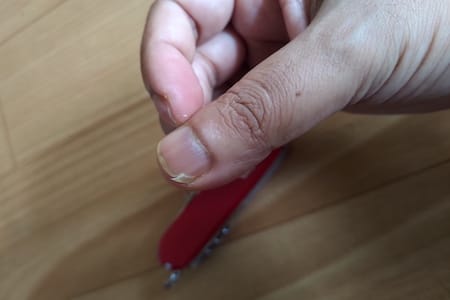
While this was totally due to my own carelessness, it did hurt for a few days.
So if using fingernails is not an option, what do you do? You use something else, something stronger that can do the job of your fingernail. Here are some options.
1. Using the Tweezers
Your Swiss Army Knife most probably already comes with a pair of tweezers. The tweezers are generally easy to pull out from the SAK without fingernails.
The tweezers fit pretty well into the groove of the nail nicks. They are also strong enough (much stronger than fingernails) to sustain the pressure to flip the tools open. Since most SAKs with Cellidor scales do come with tweezers, you will always have one if you have a SAK.
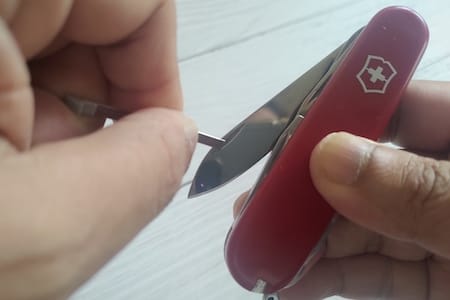
2. Using the Mini-Screwdriver
Another small tool that comes with some Swiss Army Knives is the mini screwdriver. You must have seen this attached to the corkscrew in a SAK.
The mini-screwdriver can also be used to pull out the other tools in the SAK with nail nicks.
It is not found in most Swiss Army Knives, is rather short, and is a bit difficult to use. But if you have it, use it. It is much stronger than your fingernails.

If your SAK has a corkscrew but not the mini-screwdriver, you can purchase it separately and attach it to the corkscrew, so that you always have it with you. It is also useful for tightening or loosening very small screws, like the one you find in eyeglasses.
3. Using a thin Key
If you do not have the tweezers or the mini-screwdriver, you have to depend on external items to pry open the Swiss Army Knife.
You may use one of the keys on your keyring. The key has to be thin enough to fit the nail nick.
This is a good option for those who always carry a bunch of keys in their pocket. you may use one of the keys on your keyring.
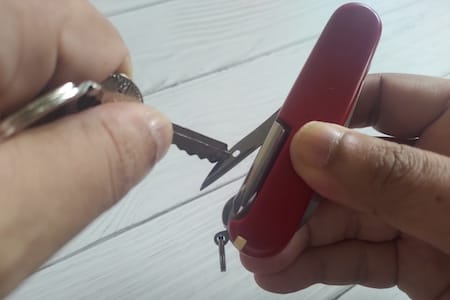
4. Using a Coin
I guess you at least have a coin in your pocket? You are in luck then.
Most coins are good enough to pry the tools open in a Swiss Army Knife. I have done this many times just for fun, so I know that it works.
If the coin is thick, just hold it at an angle on the nail nick and it should work.
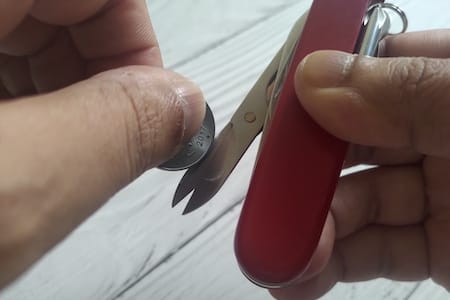
While the above options do work, using your fingernails is the easiest and the fastest way to open Swiss Army Knives. You can use the above tips initially, till the slip joint stiffness reduces a bit. But if your fingernails are too weak, better take care of your nails till they are healthy and strong enough to get the job done. SAKs are designed to be opened with fingernails.
Opening a Swiss Army Knife that is Stuck with Dirt and Gunk Inside
If the Swiss Army Knife is jammed with dirt, grime, and gunk inside, cleaning it out is your best option before you can even attempt to open the tools. Keeping the SAK immersed in soapy hot water should loosen up the gunk inside.
Very hot water may affect the Cellidor scales of the SAK, so remove the scales if possible. Else, just use warm water.
Then clean out as much gunk as you can with an earbud stick. If the gunk inside is too stiff, you can use a needle to poke and clean as much as possible.
For severe cases, you can use WD40. Keep the SAK soaked in WD40 for some time, and then try to open the tools.
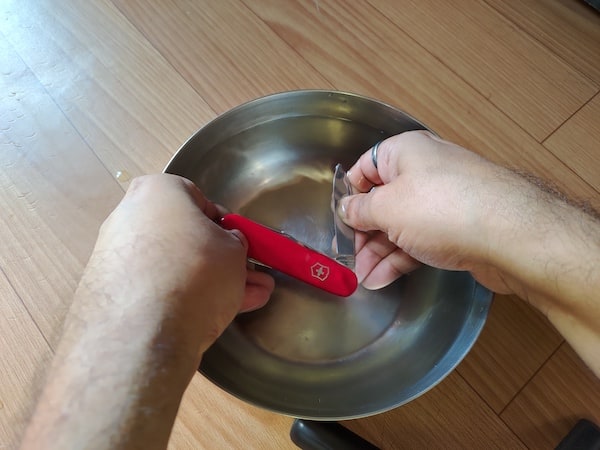
If the tools are still very stiff, use needle-nose pliers to pull the tools out. Once you get the tools to budge a little, keep using the pliers to pull and push each tool repeatedly. This will further loosen up the joints.
Once you are able to pull out all the tools completely, again keep the SAK immersed in hot water with all the tools in an open position for some time. Once the SAK is thoroughly cleaned, dry it in the sun.
Though SAK steel is highly resistant to rusting, it does rust under adverse conditions, especially when you do not take proper care of your SAK. I have explained everything about the steel that Victorinox uses in Swiss Army Knives in this post.
Occasionally cleaning your Swiss Army Knife will go a long way in keeping it functional for decades of use. I usually clean my SAKs once or twice a year, depending on the usage. The process is easy. Here is a step-by-step guide.
Final Thoughts
I have been using Swiss Army Knives for over a decade now, and except for a few rare cases, never had any problems opening the tools with my fingernails. Most new SAKs come with smooth slip-joint spring action. For the rare cases where you get a SAK with considerably stronger slip joints, it is just a matter of time till you become comfortable using it. Oiling and working the joints a bit help in such cases.
Cleaning is the best service you can provide to your SAK. Who knows, someday you might be passing your Swiss Army Knife over to your children or grandchildren. With proper care, SAKs have been known to surpass the longevity of mere mortals.

